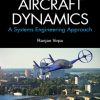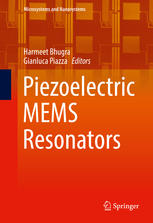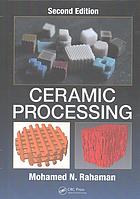Piezoelectric Ceramic Resonators 1st Edition by Jiří Erhart,Petr Půlpán,Martin Pustka 9783319424811 3319424815
$50.00 Original price was: $50.00.$25.00Current price is: $25.00.
Piezoelectric Ceramic Resonators 1st Edition by Jiří Erhart,Petr Půlpán,Martin Pustka – Ebook PDF Instant Download/Delivery:9783319424811,3319424815
Full download Piezoelectric Ceramic Resonators 1st Edition after payment

Product details:
ISBN 10:3319424815
ISBN 13:9783319424811
Author: Jiří Erhart,Petr Půlpán,Martin Pustka
This book helps the reader to understand the specific properties of piezoelectric ceramic resonators. It provides their theoretical description by immitance and equivalent circuit method. The nummerical modelling described is accompanied by examples of properties measured experimentally. Piezoelectric ceramic transformers are also covered, followed by a series of solved and unsolved problems prepared specially for students.
Piezoelectric Ceramic Resonators 1st Table of contents:
1 Piezoelectricity and Piezoelectric Properties
1.1 Pyroelectricity
1.2 Piezoelectricity Discovery
1.3 Ferroelectricity Discovery
1.4 Piezoelectric Properties
References
2 Piezoelectric Ceramic Materials
2.1 PZT Ceramics
2.2 Other Ceramic Compositions
2.3 Example of Crystallographic Symmetry for Mechanically Textured Ceramics
References
3 Piezoelectric Ceramic Resonators (Resonance Frequency and Equivalent Electrical Circuit)
3.1 Introduction
3.1.1 Basic Assumptions and Approximations
3.1.2 Solution of Free Vibrations
3.1.3 Electromechanical Coupling Factor
3.1.4 Electrical Equivalent Circuit
3.2 Length Extensional Mode (Side Electrodes)
3.2.1 Solution of Free Vibrations
3.2.2 Parameters of Electrical Equivalent Circuit
3.3 Length Extensional Mode (End Electrodes)
3.3.1 Solution of Free Vibrations
3.3.2 Parameters of Electrical Equivalent Circuit
3.4 Thickness Shear Mode (Side Electrodes)
3.4.1 Solution of Free Vibrations
3.4.2 Parameters of Electrical Equivalent Circuit
3.5 Thickness Shear Mode (End Electrodes)
3.5.1 Solution of Free Vibrations
3.5.2 Parameters of Electrical Equivalent Circuit
3.6 Thickness Extensional Mode
3.6.1 Solution of Free Vibrations
3.6.2 Parameters of Electrical Equivalent Circuit
3.7 Radial Mode of Circular Plate
3.7.1 Solution of Free Vibrations
3.7.2 Parameters of Electrical Equivalent Circuit
3.7.3 Solution Using Planar Material Constants
3.8 Radial Mode of Circular Rod
3.8.1 Solution of Free Vibrations
3.8.2 Parameters of Electrical Equivalent Circuit
3.9 Contour Extensional Mode of Square Plate
3.9.1 Solution of Free Vibrations
3.9.2 Parameters of Electrical Equivalent Circuit
3.10 Width Extensional Mode
3.10.1 Solution of Free Vibrations
3.10.2 Parameters of Electrical Equivalent Circuit
3.11 Width Extensional Mode (Side Electrodes)
3.11.1 Solution of Free Vibrations
3.11.2 Parameters of Electrical Equivalent Circuit
3.12 Thickness Extensional Mode (Side Electrodes)
3.12.1 Solution of Free Vibrations
3.12.2 Parameters of Electrical Equivalent Circuit
3.13 Width Extensional Mode (End Electrodes)
3.13.1 Solution of Free Vibrations
3.13.2 Parameters of Electrical Equivalent Circuit
3.14 Radial Axisymmetric Vibrations of Rings and Tubes
3.14.1 Radial Mode of Thin Rings
3.14.2 Radial Mode of Axially Polarized Ring
3.14.3 Radial Mode of Radially Polarized Ring
3.15 Miscellaneous Vibration Modes
3.16 Approximative Theories for the Solution of Piezoelectric Resonator Vibrations
References
4 Applications of Piezoelectric Resonators
4.1 Introduction
4.2 Impedance Spectrum Characteristics
4.3 Electromechanical Coupling Factor
4.4 Material Property Measurement for Piezoelectric Ceramics
4.4.1 Thickness Poled Bar with Electrodes on Major Faces (varvec {k}_{31}-mode)
4.4.2 Longitudinally Poled Bar with Electrodes at the Ends ({varvec k}_{bf 33}-mode)
4.4.3 Longitudinally Poled Bar or Plate with Electrodes on Major Faces ({varvec k}_{bf 15}-mode)
4.4.4 Thickness Poled Disc — Thickness Extensional Mode ({varvec k}_{{varvec t}}-mode)
4.4.5 Thickness Poled Disc — Radial Mode ({varvec k}_{varvec p}-mode)
4.4.6 Combination of Coefficients Measured at Different Vibration Modes
4.4.7 Poisson’s Ratio Measurement
4.5 Measurement Accuracy of the Electromechanical Tensors for Piezoelectric Ceramics
4.5.1 Bar, {varvec k}_{{{{bf 31}}}}-mode
4.5.2 Bar, {varvec k}_{bf 33}-mode
4.5.3 Disc, {varvec k}_{varvec p}-mode
4.5.4 Disc, {varvec k}_{{varvec t}}-mode
4.5.5 Plate or Bar, {varvec k}_{bf 15}-mode
4.6 Temperature Stability of Resonance Frequency for Ceramic Resonators
References
5 Piezoelectric Transformers
5.1 Piezoelectric Transformer Design
5.2 Piezoelectric Transformer Modeling
5.2.1 Bar Rosen type Transformer ( {bi k}_{bf 31} – bi k_{bf 33}} Mode)
5.2.2 Bar 2-Segment or 3-Segment Electrode Transformer ( bi k_{bf 31} -bi k_{bf 31} Mode)
5.2.3 Bar 2-Segment Electrode Transformer with Longitudinal Poling ({bi k}_{bf 33} bf – {bi k}_{
5.2.4 Disc Ring-Dot Transformer (bi {k_{p} – k_{p}} Mode)
5.2.5 Disc Ring-Dot Transformer Made from Two Different Materials (bi {k_{p} – k_{p}} Mode)
5.2.6 Disc Rosen type Transformer ({bi k_{p}} – bi k_{bf 33} Mode)
5.2.7 Ring Rosen type Transformer (bi k_{p} – k_{bf 33} Mode)
5.2.8 Double Ring Electrode Ring Transformer (bi k_{p} – k_{p} Mode)
References
Appendix A — Material Tensors
Appendix B — Solution in Cartesian Coordinates
B.1 General Relations
B.2 Linear Piezoelectric Equations of State for Hexagonal Crystallographic Class 6mm
Appendix C — Solution in Cylindrical Coordinates
C.1 General Relations
C.2 Linear Piezoelectric Equations of State for Hexagonal Crystallographic Class 6mm
C.3 Two-Dimensional Formulation for Plane Stress and Plane Strain
Appendix D — Piezoelectric resonators
People also search for Piezoelectric Ceramic Resonators 1st :
piezoelectric resonance
piezo resonator
piezoelectric resonant frequency
piezo ceramic disc
resonator ceramic
Tags:
Jiří Erhart,Petr Půlpán,Martin Pustka,Resonators,Piezoelectric
You may also like…
Relationships & Lifestyle - Love & Romance
Big 99 Daddies Book 2 1st Edition Casey Cox 0648998320 9780648998327
Engineering












